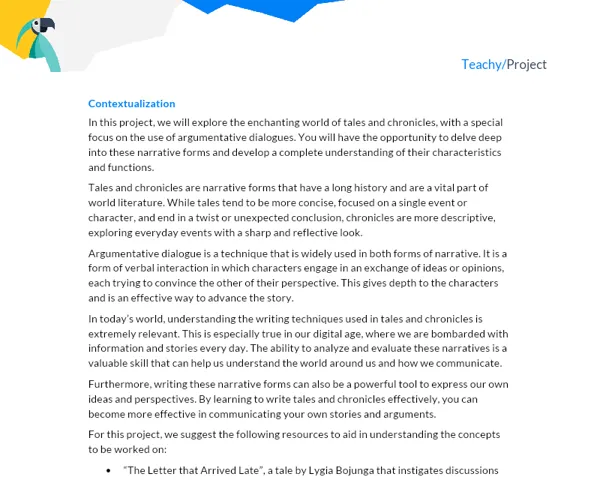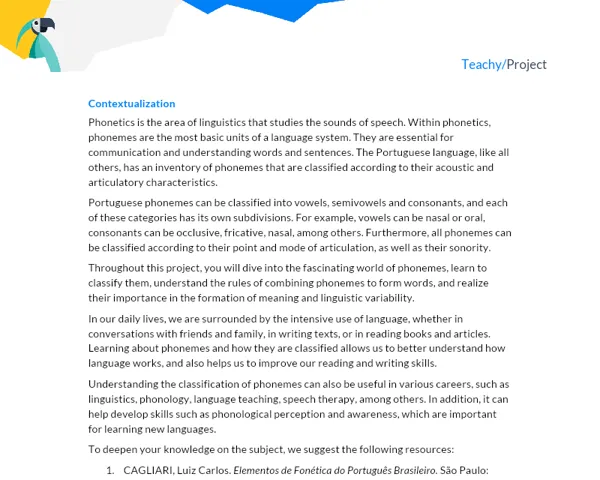Contextualization
Adverbs are a grammatical class of words that modify verbs, adjectives, or other adverbs. They are used to express various circumstances, such as place, manner, time, doubt, negation, among others. In Spanish, we learn that adverbs end in -mente, like "rapidamente", "claramente", "alegremente", etc. But not all adverbs end like that, there are many that are invariable like "bien", "mal", "aquí", "allí", etc.
Spanish grammar is rich and full of nuances, and the adverb is one of those shining gems that deserve a closer look. Learning to use adverbs correctly will not only improve your fluency in the language but also add more depth to your speech. With them, you can add details and nuances that will make what you say or write more interesting and expressive.
Each adverb has a role to play in the sentence. Adverbs of manner, for example, tell us how an action is performed. Adverbs of place indicate where the action takes place. Adverbs of time tell us when the action happens. Adverbs of intensity express the degree or intensity of an adjective, verb, or another adverb. There are many more types of adverbs waiting to be discovered!
Importance of Adverbs
In the real world, the ability to express oneself accurately is a valuable skill. For a Spanish speaker, a correct understanding of the use of adverbs can make a big difference in daily communication. It's the difference between saying "I walk" and "I walk slowly", which can have different implications depending on the context.
Furthermore, proper knowledge of adverb usage is also crucial in a globalized world. International companies, non-profit organizations, and the government are always looking for people who have a good command of different languages. And not just speaking a language, but speaking clearly, precisely, and fluently, skills that are honed with the correct knowledge of adverbs.
Atividade Prática
Activity Title: "The Magic of Adverbs in Spanish"
Project Objective:
The activity aims to deepen students' knowledge of adverbs in Spanish and their correct application. Additionally, the activity seeks to strengthen teamwork, communication, research, and writing skills.
Detailed Project Description:
Groups will be challenged to create a "Visual Guide to Adverbs in Spanish." The Guide should be made in poster format, either digital or physical, containing images, illustrations, colors, and texts that help understand the different types of adverbs, their uses, and examples of sentences with adverbs.
The presentation of this Guide will be made to the class on a set date, where each group will have 15 minutes to explain their Guide and answer questions.
Required Materials:
- Poster paper or graphic design software (if opting for digital poster)
- Colored pens, colored pencils, markers (for physical poster)
- Textbooks, class materials, internet resources for research
- Digital camera or cellphone to document the process and final product (for physical poster)
Activity Steps:
-
Group Formation: Students will be divided into groups of 3 to 5 members.
-
Study and Research: Groups will study and research about adverbs in Spanish, using provided resources and others they deem necessary.
-
Guide Planning: Groups will plan the design of their Visual Guide. They should decide which types of adverbs to include, how the concepts will be visually represented, and which sentence examples to use.
-
Guide Creation: With the plan in hand, groups will create the Visual Guide. During this phase, students should document the creation process with photos.
-
Report: Each group must produce a report documenting the entire process, the concepts learned, decisions made, and difficulties encountered.
-
Presentation: On a pre-defined date, each group will present their Visual Guide to the class, discussing the concepts covered and answering any questions.
Project Deliverables:
-
Visual Guide to Adverbs in Spanish: The final product will be a poster, digital or physical, demonstrating the group's understanding of adverbs in Spanish.
-
Project Report: Each group must submit a written report of 3 to 4 pages following the structure: Introduction (contextualization of the theme, relevance, and project objective), Development (explanation of theoretical concepts, activity description, methodology used, results discussion), Conclusions (summary of main points, lessons learned, project conclusions), and Bibliography (research sources used in the project).
-
Presentation: Groups will present the Visual Guide to the class, explaining the concepts and answering questions.
-
Photos: If the Visual Guide is physical, groups must document the creation process and the final product with photos, including them in the report.
In the report, the group needs to highlight how each member contributed to the project and which part of the work was carried out by them. Students should aim to include the practical application of adverbs in their sentence examples, showing their importance and usefulness in real life.



